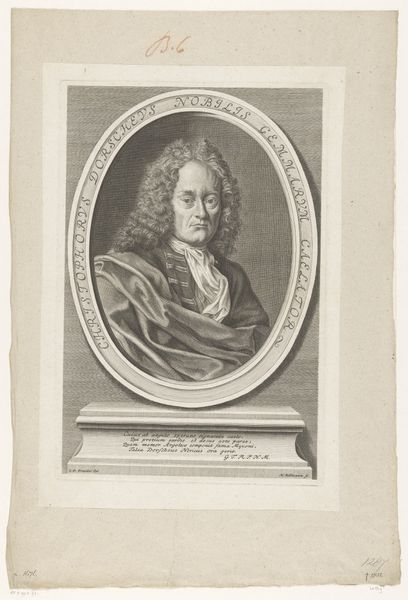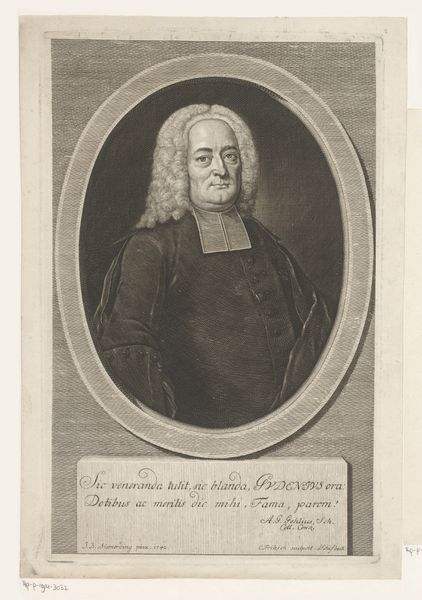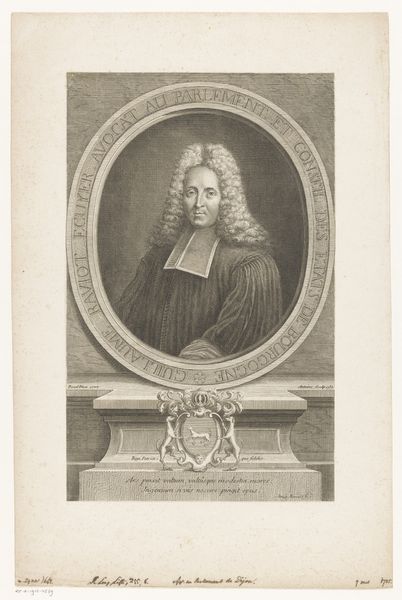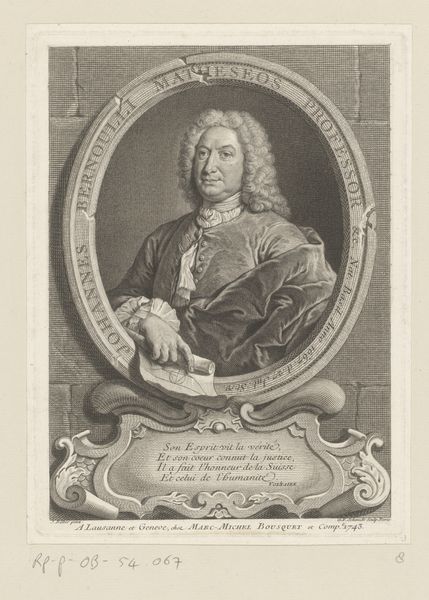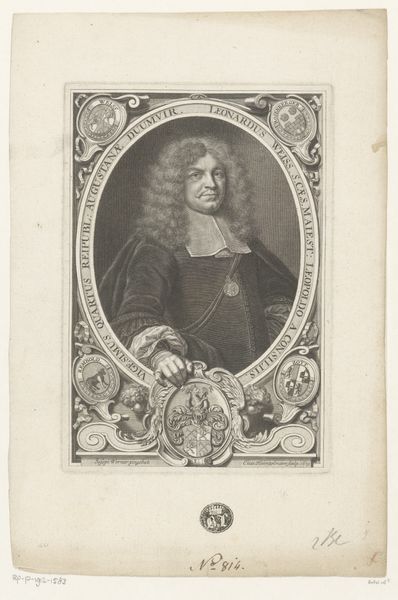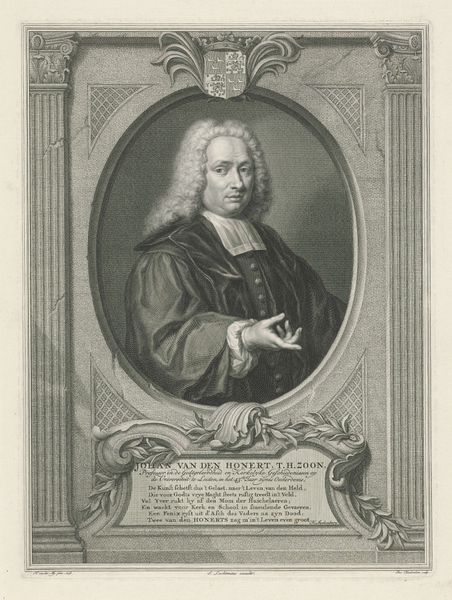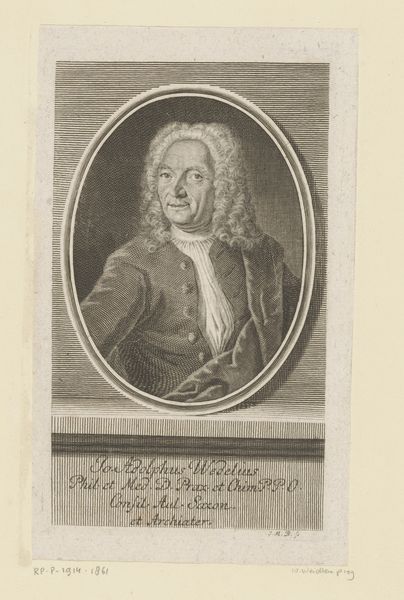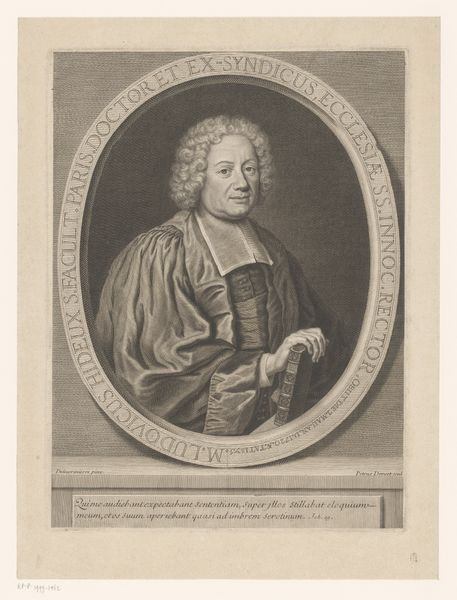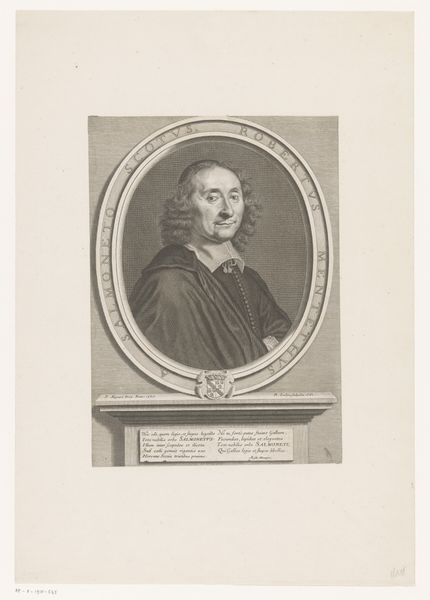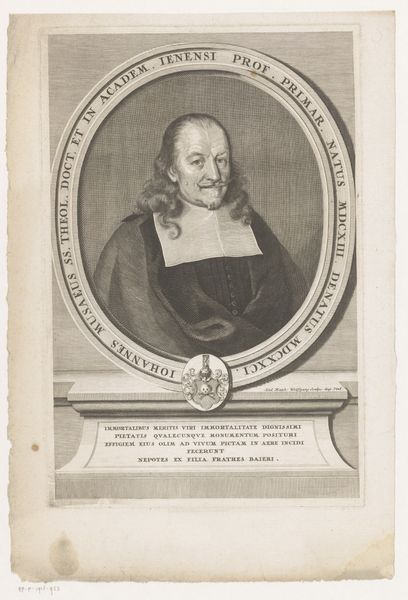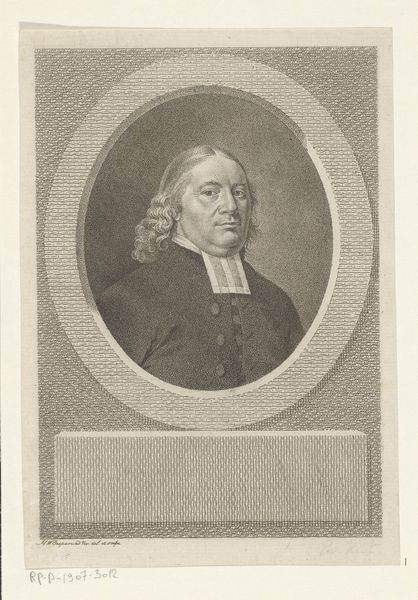
print, engraving
#
portrait
#
baroque
# print
#
engraving
Dimensions: height 212 mm, width 309 mm
Copyright: Rijks Museum: Open Domain
Curator: Oh, I rather like the slightly theatrical air of this print. It's "Portret van Cornelius van Velzen" by Jacob Houbraken, created in 1746. Editor: There's something...reproduced about it, right? Seeing a portrait reproduced is strange – like an echo chamber of social status. All this engraved repetition seems to undermine its preciousness. Curator: Well, the engraving as a medium allowed for a broader distribution of portraits, of likeness and status itself, to those who perhaps couldn't afford a painted portrait. Here, Velzen seems caught between roles: scholarly cleric, gazing slightly upward with an intensity, a Baroque kind of light almost like he's beholding something, a higher knowledge or authority... Editor: Look at how every last material implication drips with hierarchy though: from the specific type of paper used, and the ink composition, down to the very act of distributing it. These were strategic choices about accessibility that would reflect onto its sitter and, like it or not, the act of engraving it becomes inseparable from maintaining the symbolic order of 18th-century society. Curator: Perhaps... and perhaps a touch of irony crept in? There's almost a hint of self-awareness in the details. Like his hand holding that magnifying glass, it reminds you that a printed image still needs to be viewed to be "read." The Latin inscription adds to the feeling that Velzen, by way of Houbraken, is inviting you to interpret him... Editor: Inviting you to consume him. That level of dissemination and duplication created visibility—a need and a market that, to me, speak to both the power of reproduction as a tool, as much as what Velzen's own perceived value might've been. Curator: True. So, through both our readings, we begin to perceive not just Cornelius van Velzen, but a wider, layered reality—visible through the tiny grooves on a piece of paper. Editor: Indeed. This print pulls at the seams of the gilded frame—metaphorically and, with its mechanical process of reproduction, almost literally.
Comments
No comments
Be the first to comment and join the conversation on the ultimate creative platform.
